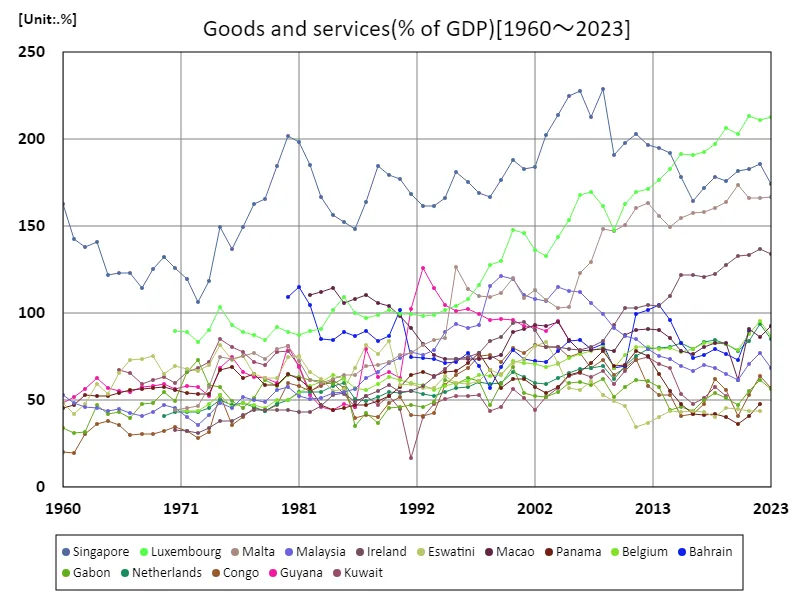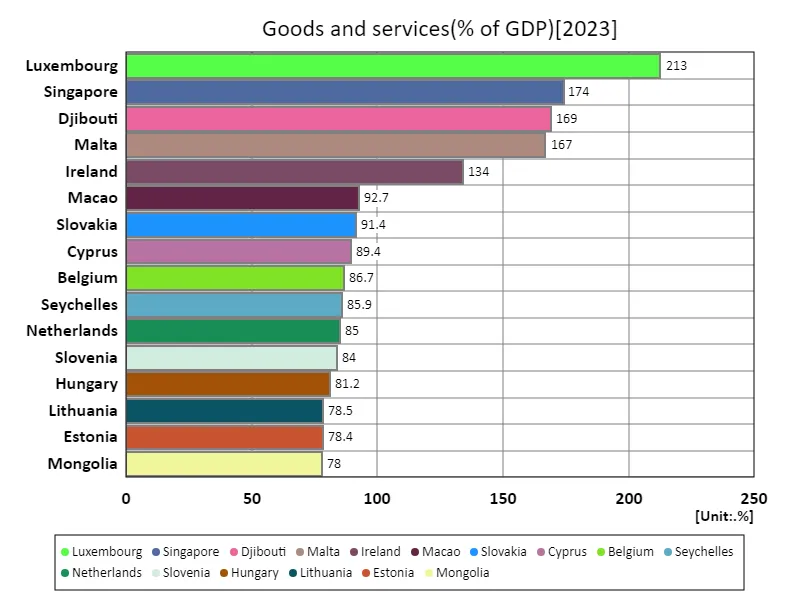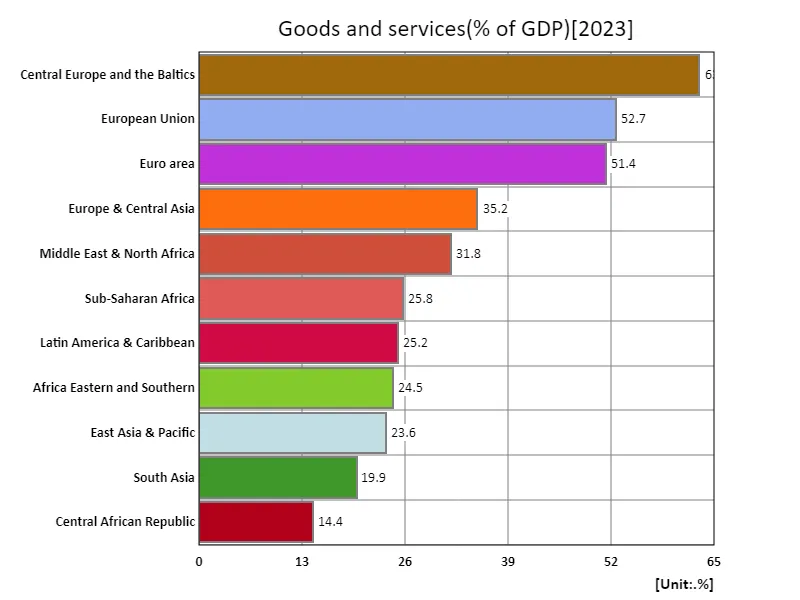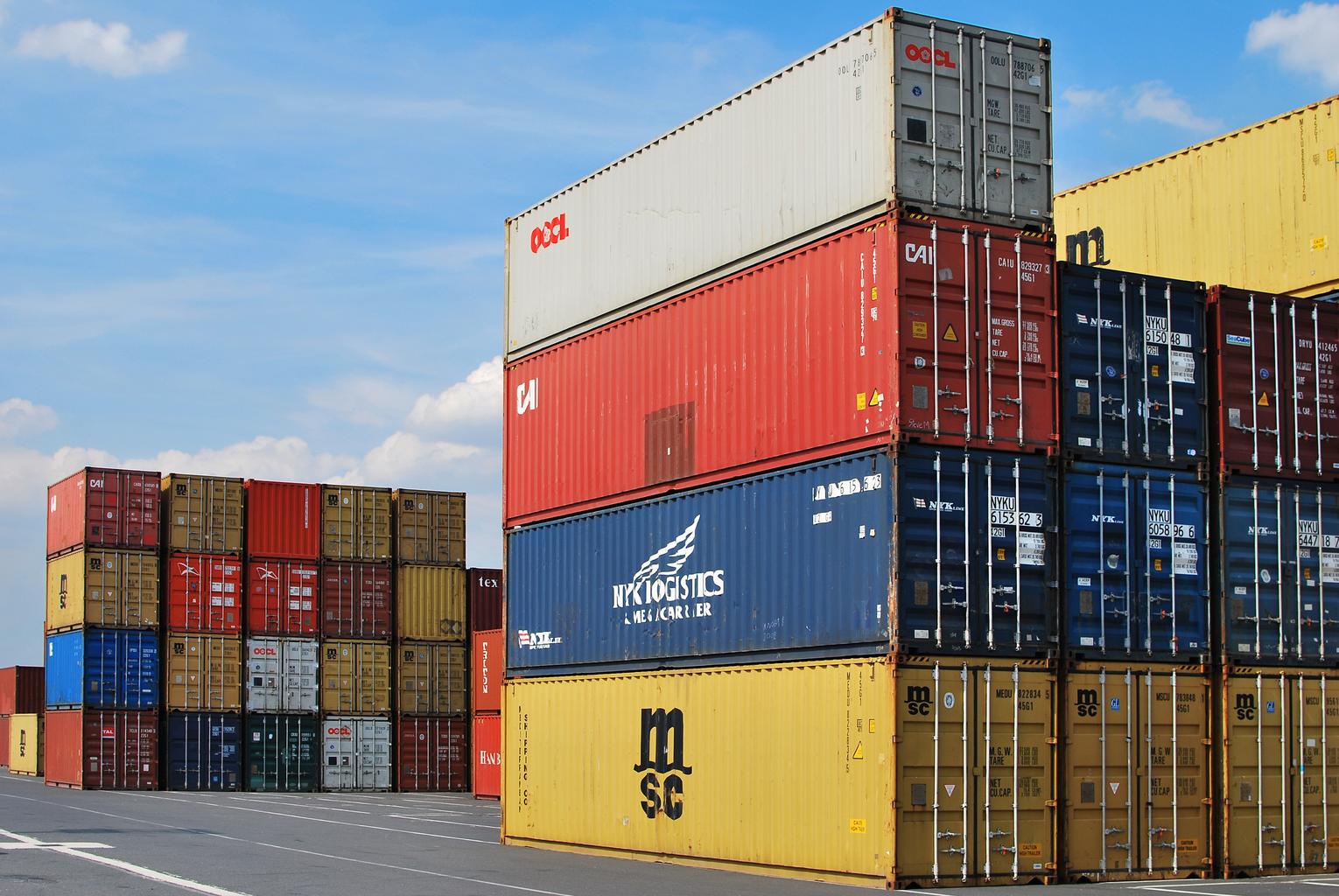Abstract
The ratio of exports to GDP in trade is an important indicator of an economy’s international dependence and competitiveness. According to 2023 data, Luxembourg’s exports of goods and services reached 213% of GDP, the highest ratio in the world. This indicates that the country has a very high dependence on exports relative to the size of its economy, mainly driven by financial services and high value-added services, as well as a small but diversified range of exports. In small countries like Luxembourg, international trade often plays a central role in the economy. In contrast, countries with larger economies tend to have a lower ratio of exports to GDP. For example, economic giants such as China and the United States have relatively low export-to-GDP ratios because they have large domestic markets. Another recent trend is the rapid growth of trade in services due to digitalization and advances in global supply chains. In particular, the economy is becoming more export-dependent, with exports of digital and financial services increasing. Luxembourg’s high export ratio can also be seen to reflect this global trend.
Goods and services (percent of GDP)
Singapore’s goods and services GDP ratio of 229% in 2008 indicates the country’s economy’s extreme dependence on international trade. This high ratio reflects Singapore’s role as a trade hub, with import and export activity accounting for a large proportion of gross domestic product. Taking advantage of its strategic geographic location and highly developed logistics network, Singapore has played a vital role in the global economy. However, the decline in the ratio to 76.1% in recent years is due to several factors. First, the structure of the Singapore economy is changing and domestic demand is increasing. While financial services and high value-added industries have grown, traditional manufacturing and trade dependence have declined relatively. The 2008 financial crisis and subsequent fluctuations in the global economy may also have played a role. In addition, changes in the international trade environment and the rise of emerging markets are also likely to affect Singapore’s dependence on exports. Overall, Singapore’s data shows how its economy has changed over time, changing its reliance on international trade and how the balance between domestic and external demand has evolved.


The maximum is 229%[2008] of Singapore, and the current value is about 76.1%
Goods and services (percent of GDP) (nations around the world)
Singapore’s goods and services GDP ratio of 229% in 2008 indicates the country played a vital role in the global trade network at that time. This high ratio reflects Singapore’s strategic geographic location and developed logistics infrastructure, with an economic structure dependent on imports and exports. Singapore was an international business hub, serving as a centre for trade and financial services. However, the current ratio is significantly lower at 76.1% due to several factors. First, Singapore’s economy is diversifying, with domestic demand and high value-added industries growing. Additionally, changes in the global economic environment, particularly the 2008 financial crisis and the subsequent economic adjustment, had an impact. In addition, the rise of emerging markets and changes in trading partners are also affecting Singapore’s trade dependence. Overall, Singapore’s economy is shifting from international trade to domestic demand-led growth, and the fluctuations in its GDP ratio reflect this economic change.


The maximum is 229%[2008] of Singapore, and the current value is about 76.1%
Goods and services (% of GDP) (World countries, latest year)
Data for 2023 shows that Luxembourg has the highest goods and services to GDP ratio at 213%, compared to an average of 45.2%, for a total of 6,100% across the countries. Luxembourg’s high ratio indicates that the country has a very high economic export dependency. The country is centered on the financial and service industries, and although it is a small country, it is heavily dependent on international trade, resulting in a very high ratio of exports to GDP. On the other hand, the average figure of 45.2% reflects the balance of trade dependence across the world. This includes countries with large economies and diverse economic structures, with different sizes of domestic markets and therefore varying ratios of trade to GDP. The overall total of 6,100% represents the combined percentage of all countries in the world and reflects how widespread international trade is in economic activity. Small countries and trade-oriented economies tend to have particularly high ratios, while large countries tend to have lower average ratios due to their large share of domestic demand. In recent years, the increasing complexity and digitalization of the global economy has led to an increase in trade in services and changes in trading partners, which is also affecting each country’s GDP ratio.


The maximum is 213% of Luxembourg, the average is 45.4%, and the total is 6.08k%
Goods and services (% of GDP) (region, latest year)
According to 2023 data, the highest GDP share of goods and services is in Central European and Baltic countries, reaching 63.2%. This compares to a global average of 33.4% and a total of 368%. The high ratios for Central Europe and the Baltic countries indicate that these regions have a high dependence on international trade and export-driven economies. This is particularly true because the manufacturing and service industries, although small in scale, are well developed and the country is highly dependent on international markets. On the other hand, the global average of 33.4% is a relatively balanced figure as it includes countries with different economic sizes and structures. These countries include large economic zones and diverse industries, and many of them have important domestic markets, so their trade to GDP ratios tend to be low. The total figure of 368% represents the combined ratio of trade in goods and services to each country’s GDP, reflecting the spread of trade activity around the world. These figures show that trade accounts for an important part of economic activity in many countries, and that countries’ trade ratios are changing as globalization and economic interdependence progress.


The maximum is 63.2% of Central Europe and the Baltics, the average is 33.4%, and the total is 368%



Comments